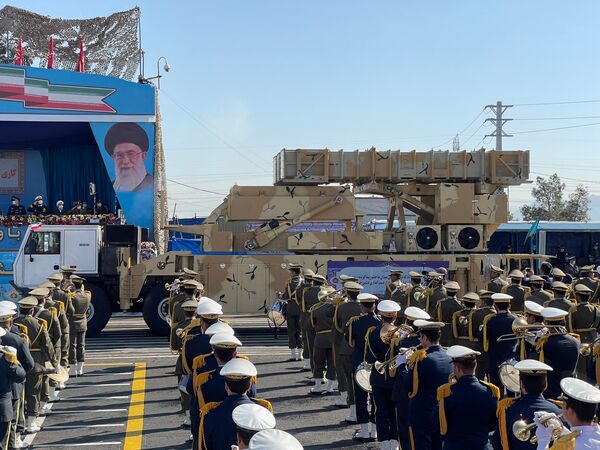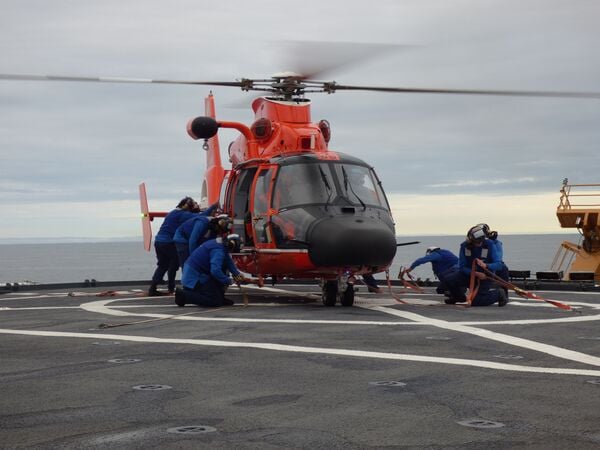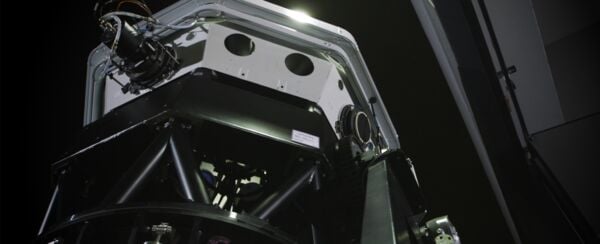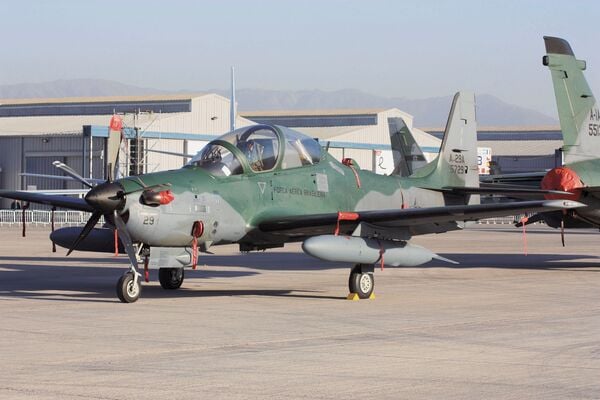- About
- Intara
- Capabilities
- Advisory
- Resources
- News
- Store
Iran parades new air-defence system, UAVs
22 April 2022
by Jeremy Binnie


The new air-defence system is identified as the Tactical Hunter/Sayyad. (Tasnim News Agency)
The Iranian military displayed a previously unseen air-defence system and at least two new types of unmanned aerial vehicles (UAVs) during its Army Day parade in Tehran on 19 April.
The towed air-defence system had a launcher for three surface-to-air missiles and a phased-array radar mounted on a rotating platform. The launcher tilts backwards so the radar can fold forward to search and track targets when deployed.
The missile canisters were the same as the ones used with the 15 Khordad air-defence system and the radar appeared to be similar, which would make it a standalone version of a system that has separate radar and command post vehicles, as well as multiple launchers.
Tasnim News Agency identified the system as the Tactical Hunter/Sayyad, an apparent reference to the Sayyad family of surface-to-air missiles that are used with several Iranian air-defence systems, including the 15 Khordad.
The previously unseen UAVs displayed in the parade included one labelled as the Ababil-5 and two other seemingly identical examples of the same type.
US Coast Guard Airbus MH-65s retire from Arctic mission
26 April 2024
by Zach Rosenberg


A Kodiak-based MH-65 trains aboard the USCGC Healy in 2022. (Janes/Michael Fabey)
The last US Coast Guard (USCG) Airbus MH-65 Dolphin in Alaska retired from Air Station Kodiak on 23 April, ending the type's 36-year employment in the service's Alaska Patrol (ALPAT) role.
“For decades, the cutter and helicopter team were the core of the ALPAT mission,” said Commander James Kenshalo, a USCG MH-65 Dolphin pilot. “Together they projected force and protection to the most extreme remote regions of our nation's territories, operating beyond where help could reach.”
Air Station Kodiak operates six Sikorsky MH-60Ts and is scheduled to receive three more in 2025. The service intends to standardise its full rescue helicopter fleet on the MH-60T, which has a longer range, greater payload capacity, and commonality with other armed service fleets. Alaska is among the first regions to complete the transition because of the long ranges required to perform rescue and security missions in the region.
Italy to enhance SSA with new ground-based sensors
26 April 2024
by Olivia Savage


Flyeye is a multiple-optics telescope with a very wide field of view that will be capable of classifying objects in space as small as 15 cm in LEO and 35 cm in MEO. The 6.5 m high and 4 m wide telescope will be used by the Italian Space Agency and military for SSA. (OHB Italia)
The Italian National Armaments Directorate (NAD) is procuring three ground-based sensors to enhance the country's space situational awareness (SSA), Janes learnt at the Military Space Situational Awareness Conference 2024, held in London from 22 to 24 April.
In total, two optical telescopes and one high-performance radar are being procured as part of its national SSA plans, Lieutenant Colonel Ferdinando Dolce, the head of SSA at NAD, said at the conference.
The first sensor being procured is a high-performance optical surveillance telescope from OHB Italia called Flyeye, Lt Col Dolce said.
Flyeye will have the capacity to monitor objects in low Earth orbit (LEO), medium Earth orbit (MEO), and geostationary orbit (GEO), Commander of the Space Situational Awareness Centre at the Italian Air Force Colonel Dario Tarantino told Janes
Brazil to update A-29 Super Tucano aircraft fleet
25 April 2024
by Victor Barreira


A Brazilian Air Force Embraer EMB 314 Super Tucano light attack/counter-insurgency aircraft. The details of Brazil's fleet upgrade are as yet undisclosed. (Janes/Gareth Jennings)
Embraer Defense and Security is to carry out the mid-life upgrade (MLU) of 68 of the EMB 314 (locally designated A-29) Super Tucano training and light attack aircraft of the Brazilian Air Force, the service's commander Lieutenant Brigadier Marcelo Kanitz Damasceno said on 17 April during a presentation to the Brazilian Committee on Foreign Relations and National Defense.
The MLU is intended to extend the lifespan of the aircraft by up to 25 years, Lt Brig Damasceno said, and follows a June 2023 agreement between Embraer and the Brazilian Air Force to study a technological refresh of the Super Tucanos, although details were not disclosed.
Brazil purchased 25 A-29A and 51 A-29B aircraft in 2001, adding eight A-29As and 15 A-29Bs in 2005. The fleet was received between 2003 and 2012.
For more information, please seeEmbraer sees market for 490 Super Tucanos .
The Iranian military displayed a previously unseen air-defence system and at least two new types of ...
Latest Podcasts
Iran Israel analysis
In this podcast Janes analysts discuss the Iranian attacks on Israel on the 14 April. They highlight the military systems used by Iran and the performance and impact of these on Israel. They also discuss the implications of this attack goi...
Listen nowJanes Case Studies
Using Janes Intara to build a common intelligence picture: Russian build up on the Ukrainian border
View Case StudyNews Categories
 Land Details
Land Details